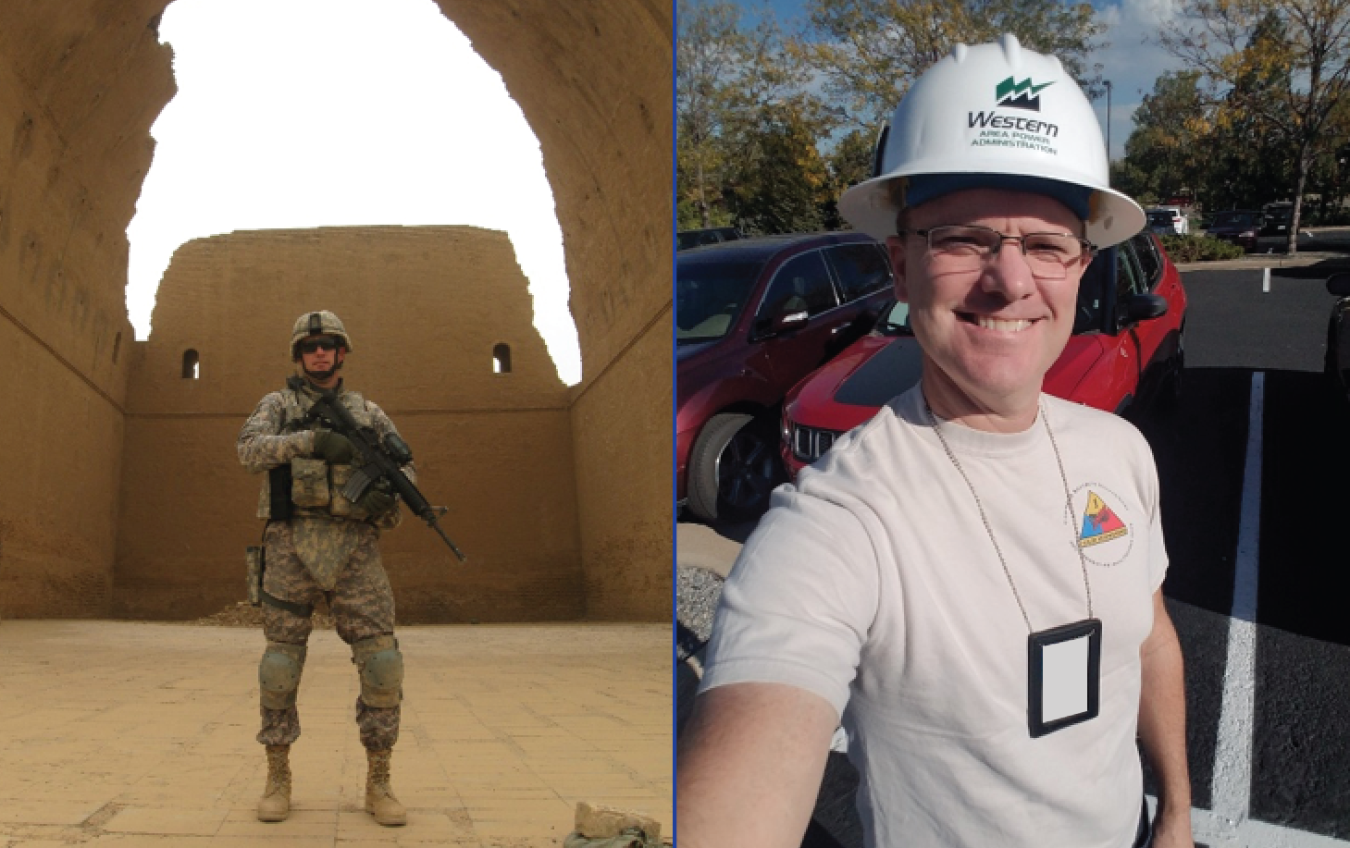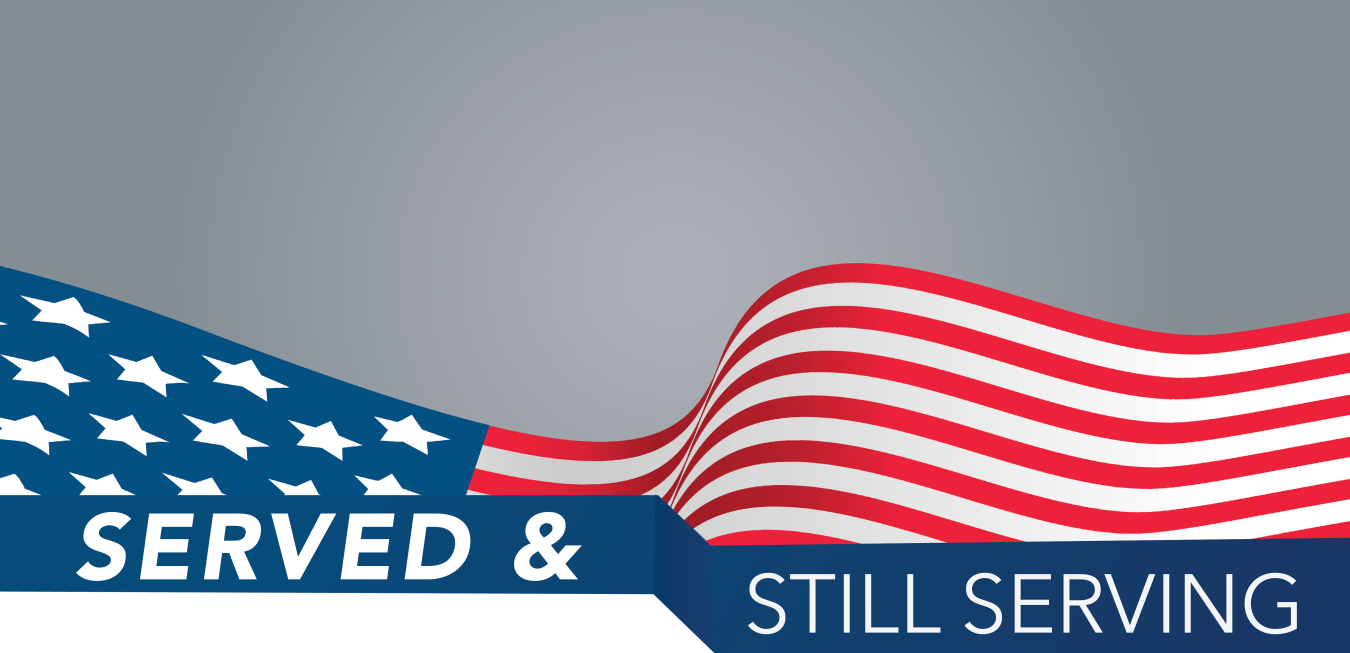Damian W. Sower: Western Area Power Administration, Electrical Engineer
November 14, 2018
Service Branch: Navy 1986-1991: Cryptologic Technician (Interpretive) Aircrew. Army 2005-2009: Infantry Platoon Sergeant
Years of Service: 9 years
Would you like to share any details of your military history, awards you may have received or other accomplishments?
My first enlistment started with the Navy. I was a highly trained asset who flew missions on the EP-3E aircraft as a Cryptologic Technician (Interpretive) 2nd Class, during my tenure with the Navy. While stationed in Athens, Greece, we flew missions all across the Mediterranean Sea. Prior to being stationed at Ft. Meade, I was trained as an Arabic linguist at the Defense Language Institute and completed Naval Aircrew Candidate School and SERE school. I once deployed as an FBI asset to Puerto Rico. After I got out of the Navy in July 1990, I was recalled to active duty for Operations Desert Shield and Desert Storm and flew combat patrols in support of national security interests from the island of Bahrain. I witnessed first-hand the destruction Saddam Hussein brought to that area of the Persian Gulf and Kuwait in particular. My fellow linguist and I often heard the sound of the Patriot missiles firing at the SCUDS Saddam launched at Bahrain.
My second enlistment found me stationed in Europe as an infantryman with the 2nd Brigade Combat Team, 1st Armored Division in Baumholder, Germany. I was, ironically, initially assigned to the brigade S2 (intelligence unit) who had no idea I held a degree in electrical engineering and was an accomplished Arabic linguist with combat experience. During my first deployment to Iraq I was a gunner for the brigade commander throughout the Baghdad area of operations. Insurgents fired on our patrols, tried to destroy us with IEDs, and when that didn’t work used suicide bombers to inflict damage, Like the SVBIED that killed 3 soldiers and wounded 40 at the Baghdad West Substation. I am proud of the fact that I earned my Expert Infantryman Badge (EIB) while we were training in Kuwait prior to moving to Iraq.
During my second deployment, a 15-month dance (we were the LAST brigade to endure a 15-month tumult), I was a personal security officer and infantry platoon sergeant who planned, coordinated and executed missions for Command Security Detachment 66; I analyzed intelligence reports, terrain imagery, and battlefield geography for the 2BCT Deputy Commander. My unit conducted over 230 combat patrols covering more than 19,000 km with a four-vehicle convoy and 15 personnel (platoon plus State Department, USDA, USAID, and USACE civilians) in the Baghdad Province. I spoke with Iraqi government officials, army, and police officers, as well as citizens to enhance security. While not on patrol, I worked in the brigade Tactical Operations Center and translated documents, coordinated Black Hawk flights for pre-arranged meetings, prepared story boards, intelligence notes, and executive summaries for key leader engagements, a job typically assigned to field grade officers.
Please take a moment to reflect on your thoughts when considering your service uniform. What does your service uniform represent to you?
My service in uniform represents the highest of standards, integrity, and brave dedication in the face of overwhelming challenges. It’s a symbol of the consistent, persistent attention to the details others miss and an honor to memorialize my soldiers who died in combat.
Teamwork is essential across many contexts in life. Please share how your service in the military cultivated an appreciation for the value of teamwork. Do you draw from these experiences, or what similarities exist, when working within teams at the DOE?
The value of teamwork is never more obvious and necessary than when well-planned operations go awry. Like when one of your convoy vehicles runs to close to the edge of a sinkhole and manages to slide into it. It requires everyone on the team to look around and find something they can do to help without being told. It demands a patient and calm assessment followed by determined action to achieve the goal.
Military service can have a profound and lasting impact on those who serve. Your perspective is unique in having seen both the military and the civilian sides of service. What story could you share of service before self?
As the Personal Security Officer for the 2nd Brigade Combat Team Deputy Brigade Commander, it was my responsibility to protect him at all costs. I commanded a 4-vehicle convoy of armored vehicles and 12-15 soldiers. I coordinated security with other American units in the area, studied the intelligence reports from our S2 group, and decided on routes based on IED and small arms reports from other patrols. During a mission to meet with local council leaders and influential sheikhs in the restive city of Salman Pak we encountered one of the worst kind of acts of terror. A council member left the meeting and began shooting at our soldiers, killing 2, wounding 2, and killing the translator. I wanted, with all my heart to race over and return fire, but my mission was to protect the Deputy Commander. I put him in the vehicle and our convoy took off to return to FOB Hammer. En route, I could hear the 9-line medevac being called over the radio and listened as they shouted for help. I could do nothing to help them. I had to complete my mission and return the commander safely to base.
What inspired your interest the agency, and how did your prior service prepare you to join the DOE’s workforce?
I was immediately intrigued by the USAjobs.gov position description for the Western Area Power Administration that asked “Do you have what it takes to design 500KV transmission lines?” Prior to graduating from college at the University of Idaho in 1995, I wanted to work as power engineer but ended up in semi-conductors processing silicon wafers. So, I was excited about the possibility of working in that field. My prior service taught me how to “hurry up and wait”, and I’ve found that to be true at WAPA as well. I am more patient with design and design review meetings.
Your talents contribute to an innovative and vibrant scientific ecosystem important for matters of national security, energy technologies, and economic prosperity. How does your role, whether directly or indirectly, allow the agency to continue push the frontiers of science?
My role allows me to directly influence the direction of electrical engineering systems and processes at WAPA because I am frequently reviewing the latest technologies in batteries, relays, and controls, while designing low-voltage electrical systems, lighting, and control boards for our substation and control buildings. I stay up to date on the latest innovations as a Senior Member of IEEE and further enhanced my insight by obtaining my professional engineering license from the State of Colorado in December 2017. In 2016 I initiated an effort to change our department method of choosing the size of a station battery. I pointed out the cost savings from previous projects to my manager and he gave me the go ahead to investigate further. I coordinated conference calls between my manager and senior engineers and major battery manufacturers to provide the necessary information for moving forward. I researched the latest IEEE 485 guide for station battery sizing and provided a road map for transitioning to the new process. After a peer review and final discussions we decided to adopt the IEEE 485 method, quickly resulting in a smaller battery footprint, less weight, less cost and smaller battery chargers.


